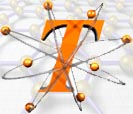The research aims:
- to analyze the organizational and technological dimensions of the evolutionary process of networks of SMEs towards the I.E. in order to study the dynamics of the co-evolution of organizations and technologies;
- to experiment methodologies and tools to support a network of traditional SMEs towards IE configurations.
It proposes to utilize and integrate research approaches (in terms of research questions and research methods) of the organization science and computer science. The collaboration of researchers with different disciplinary backgrounds increases the probability to develop a richer interpretation of the phenomenon and therefore to develop a more solid grounded theory. In fact, researchers with similar backgrounds may end up be influenced by empirical evidence that can be easily related to their theoretical categories and therefore missing other relevant phenomena. The effort to integrate both the organizational and the technological perspectives will be articulated during the execution of the research activity through (a) multidisciplinary research teams (belonging to the different research units as explained below), (b) co-location of organization and computer science researchers in the empirical contexts selected for the study, (c) the continuous sharing of findings of the empirical research so that the results of some research activities will be the inputs for others (e.g. analysis of organizational contingencies). Below, we have distinguished between research questions e research methods of the organizational and technological dimensions in order to highlight their specificities.
As for the organizational aspect, the IE has been hailed as the future organizational configuration to compete in context characterized by ambiguity, uncertainty, and complexity. Little research has been done to identify and analyze the circumstances under which firms and particularly networks of SMEs can adopt the IE. Padgett and Powell (2003) argued that the emergence of innovative configurations entails changes across different domains: they labeled this process cross-domain rewiring. Therefore, in order to fully exploit the potential of digital technologies changes must happen in the organizational domain.
The first set of research questions that aims to address these issues are the following:
- How do technological and organizational domains co-evolve?
- What are the environmental contingencies that mediate the co-evolution of organizations and technologies in networks of SMEs?
- What are the features of innovative organizational models that enable networks of SMEs to adopt IE paradigm?
- What are the features of innovative organizational models for software firms to exploit the potential of the IEs?
As regards the technological (computer science) aspect, we have to point out that the big enterprises already have precise methodologies to evolve towards IE assets. These methodologies are mainly based on the “Component Based Modelling” paradigm, that aim to analyze a firm in terms of its basic components, its potential market, its clients and its suppliers. However, these methodologies have not been customized to the SMEs specific needs.ne of the main obstacles in the development of such a transition methodology depends on the divide between digital technologies, which has reached a quite high level of maturity and the re-engineering methodologies based mainly on well known knowledge modeling methodologies.
These methodologies are poorly usable and understandable by business users or on the contrary not well connected with technology development, management and use processes.
To enhance a concrete IT diffusion, it is necessary to develop a framework that allows to interact with IT system in the way people carry out business in real word situation. This framework should be based on a language rich enough to describe companies in terms of business models, organisational structure, internal processes and partnership and allowing business people to exchange business knowledge in a formal and machine readable way through a natural language approach.
Indeed the main research question is: is it possible to define a framework, specific for the SMEs, that can allow the SMEs reconfiguration towards IE models, from the reconfiguration of their processes till the definition and the implementation of the technological platforms?
This main research question may be articulated in:
- What are the methodologies and the tools more efficient for re-designing the firm’s processes and its relationships? How is it possible to define these methodologies and tools in order to facilitate the identification, comparison and choice of different alternatives?
- What languages and tools for knowledge capturing may allow the modeling of business process in a formal way, so as to guide the life cycle of the technologies they are based on?




















